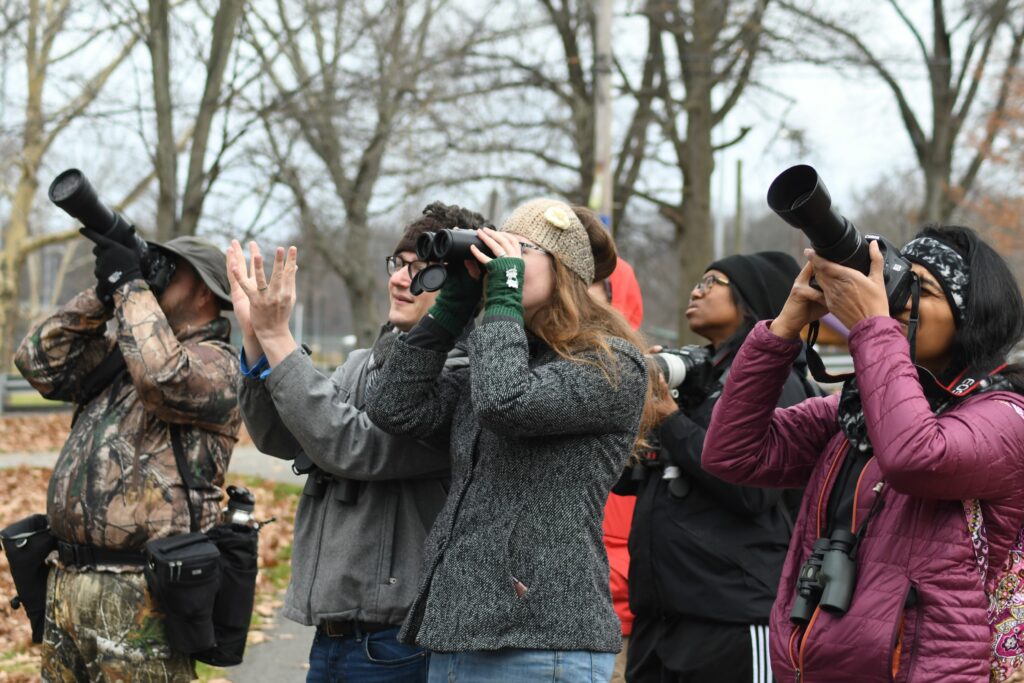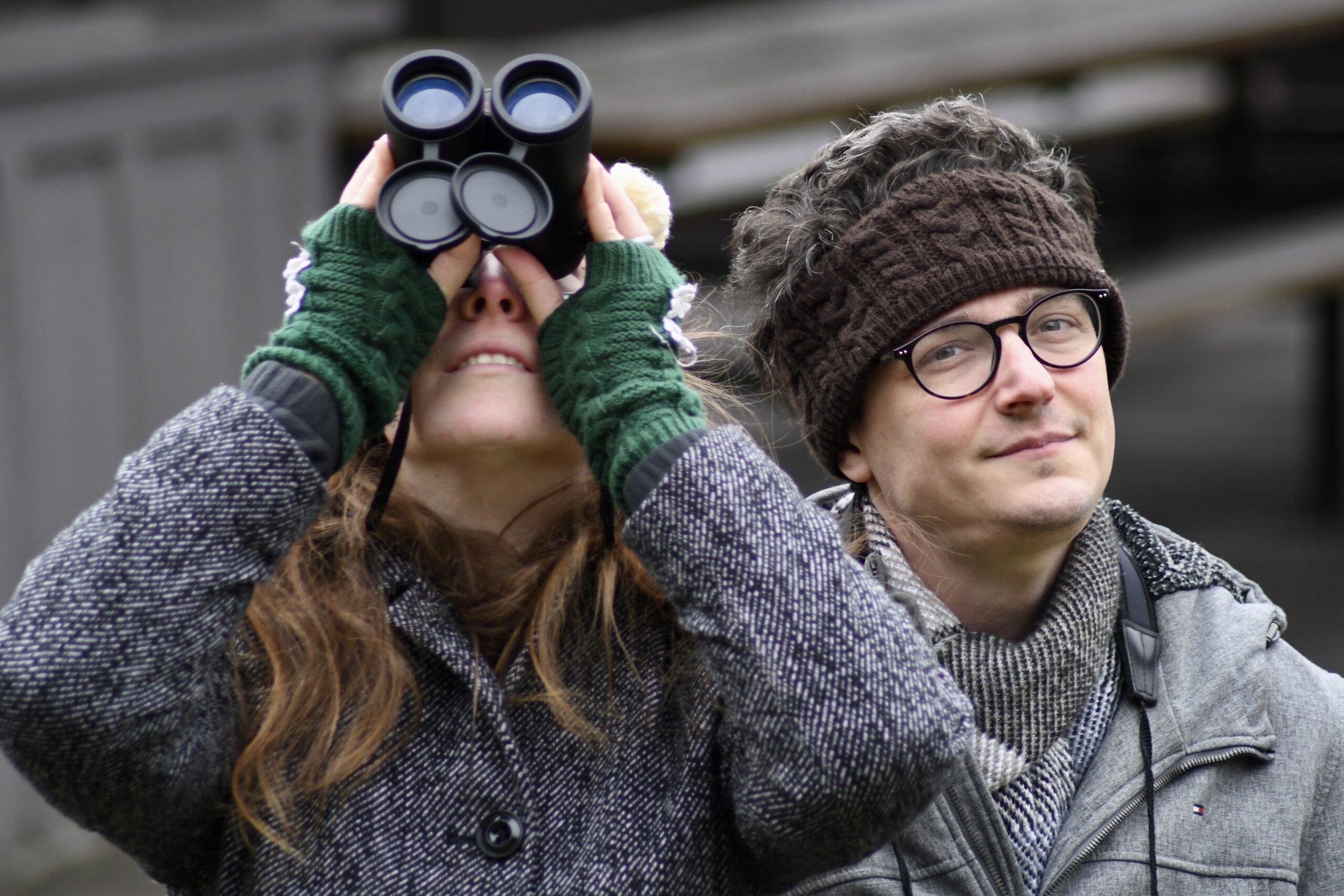The Audubon Society of Western Pennsylvania’s Christmas bird count for 2023 provided more evidence of a changing climate as the regional nonprofit continued the 100-year tradition of taking part in this national event, and it added a new circle this year.
Audubon leaders said tracking the birds helps them analyze and understand birds’ migratory patterns. It is clear that some birds are staying put or migrating shorter distances because temperatures have risen during the colder months in the region, they said.
Volunteers and staff counted birds on two different dates despite rainy and cold weather. This year a new circle in the Mon Valley contributed to the effort and bird statistics on Sunday, Dec. 17.
The annual Christmas bird count is Audubon’s initiative to gain a clear picture of bird distribution and abundance and aid in the understanding of the urgency of bird conservation, according to its website. More events are set for this month to continue that work, and Audubon officials also want residents to think ahead to help birds thrive as they look ahead to spring and summer and warmer weather.
Brian Shema, operations director who led the Pittsburgh bird count assisted by 12 others based in Fox Chapel and nearby communities, said it seems to rain and the weather turns cold every time the event takes place here, normally the Saturday after Christmas. The Pittsburgh count had 215 participants with more volunteers turning in counts from feeders and other sites in the region, South Butler had 47 participants and 25 feeder counts, and the Mon Valley circle had 66 participants and 40 checklists turned in from backyard bird counters.

The children’s versions of the counts filled up quickly. Shema said that is pretty normal because the educators do an excellent job with the youngsters in all the society’s programming. “We want everyone to be involved in the bird count, but we want to build the interest in younger people so as they grow older, they have the best interests of birds in mind,” he said. “Hopefully, they carry that on and think about birds as they get older.”
The numbers of birds detected in the circles out in the field and from those checking backyard feeders were: Pittsburgh, 35,946 birds of 76 species; Mon Valley, 2,322 birds of 52 species; and South Butler, 6,613 birds of 59 species. Descriptions of each circle’s activities that day and the exact species count can be found on the Audubon Society website. Robins and English starlings ranked high on those lists, according to those reports.
Some interesting observations from the Mon Valley count, which had four different walks on Dec. 17 with participants seeing plenty of American robins, included four common ravens seen along the Monongahela River, and a merlin that posed for a group of photographers during the Renzie Park group walk. Counters also heard a great horned owl calling and photographed an Eastern screech owl in a cavity of a black cherry tree. The Mon Valley group had a winter birds program led by community conservation coordinator Ben Kehoe last month and discussed the count at the McKeesport History and Heritage Center.
The South Butler report included “high observations of grey catbird (2), our continuing resident population of red-headed woodpecker (1), and a high count of belted kingfisher (13!).” Counters also found four bald eagles, a high number for that circle compared with past years.
Shema has been participating in the annual count for 22 years and has compiled the Pittsburgh count for about a decade. He said the Western Pennsylvania weather is definitely becoming milder, so the birds don’t travel as far in the winter months. “It takes a lot of resources for a bird to migrate,” he said. “If they can save that energy and not migrate, that’s a survival strategy. They’re smart. They don’t expend the energy if they don’t have to.”
One specific example Shema pointed out to validate this is the participants found the highest count ever of redwing blackbirds in the Pittsburgh count circle at 81. “The redwing blackbird is a migrant bird, historically not found here in the winter,” Shema explained. “They don’t migrate far — a state or two south or to the coast — for the winter. When the temperatures are mild, these birds don’t need to escape treacherous weather conditions as far as they used to do. With killdeer, the same thing happened. Their migration range is very similar to redwing blackbirds. We found 21 killdeer on Pittsburgh count day.”
Other high points for Pittsburgh included a high count of fox sparrows, a winter bird for the region, and the same with golden crown kinglets. Counters found 110 of those birds, which are only found in the Pittsburgh area in the winter months.
The Western Pennsylvania society urges residents to join the Cornell-sponsored Great Backyard Bird Count that will take place over four days this month, Feb. 16-19. It’s a global effort to create a winter snapshot of birds everywhere, according to its website.
Pennsylvania has just embarked on a bird atlas project, coordinated by the Pennsylvania Game Commission. It will be working with volunteers throughout the state to document over the course of the next five years the birds that breed in Pennsylvania, according to its website.
Shema explained this work is completed every 20 years and the Audubon Society here will participate in it. “This is the third time we’re doing it,” he said, adding that it just started Jan. 1. “It’s a way for people to enter bird activities, nesting activities, for example. Those types of observations get entered into this data set. It gives us a really good understanding of the birds that nest in our backyards and forests.”
As the weather starts to improve, Audubon urges residents to remember to keep their bird feeders and areas underneath their bird feeders clean. “This is an important thing,” Shema said. “It helps our local birds remain healthy.” Any excess bacteria or fungus there can bring disease to the birds.
In planning gardens and bedding areas, consider the birds’ health there, too. “If people can think about the types of plants that are planting in their yards, it makes an amazing difference for birds,” Shema said. “Plant native plants rather than cultivated species purchased in a nursery or garden center. The native plants can provide food for birds to survive. Those native plants can attract beneficial insects. The birds then carry those insects to their babies.”

Helen is a copy editor at the Pittsburgh Post-Gazette, but she's currently on strike. Contact her at hfallon@unionprogress.com.



